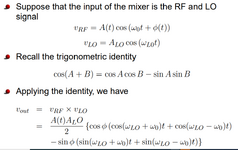yefj
Advanced Member level 4
Hello, there is a schematic sof a cavity stabilised oscilator shown bellow, taken from the attached article.
first we have our YIG source which producin a 10GHZ signal with noise around it.
It gets amplified and put into a cavity resonator which produce a pure signal at 10GHZ.
I cant understand the logical part of the feedback:
we have a return signal going back ,we kill the signal using the reference signal using amplifier and phase shifter?
Why do wi kill the return signal if we want a feedback ?
We should save it to compare it with the original.
Thanks.

first we have our YIG source which producin a 10GHZ signal with noise around it.
It gets amplified and put into a cavity resonator which produce a pure signal at 10GHZ.
I cant understand the logical part of the feedback:
we have a return signal going back ,we kill the signal using the reference signal using amplifier and phase shifter?
Why do wi kill the return signal if we want a feedback ?
We should save it to compare it with the original.
Thanks.

